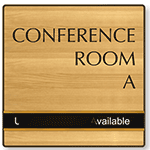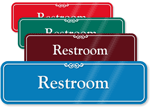Who’s really winning in the workplace surveillance game?
As employees become more tech-savvy, offices whine over lower productivity, loss of work hours, and data theft. An occasional phone call and a few minutes on the internet are perfectly fine, but distraction over long periods of time can result in huge losses. To minimize the risk of fraud and keep people focused, businesses worldwide are now resorting to workplace surveillance, some through legal policies, and others by secretly spying on employees’ devices.
A recent study highlights some of the reasons why employers might take it upon themselves to spy on their employees. Namely, non-work related internet use is rampant: around 40 percent of internet use during office hours is spent on non-work related web browsing; 31 percent of employees admit to sending confidential business information to out-of-office recipients through email; and a majority of online shopping purchases (a staggering 60 percent) are made from work.

Monitoring your employees’ devices can be this tricky, especially if your office has the BYOD (Bring-Your-Own-Device) policy. From Inc.
How offices spy on their employees
Employee monitoring systems can range from something as apparent as random bag searches to more subtle methods of spying like recording office hours, video surveillance, and call and computer monitoring.
Biometric authentication and keycards are the most common ways of keeping track of employees’ work hours, preventing unauthorized access and tailgating.
Employers intercept employee mail and discover breaches through mobile-monitoring software. These spy apps, installed on cell phones issued by the office, alert bosses to non-work related calls and web browsing. Some organizations even keep tabs on employees’ whereabouts at all times through GPS tracking.
Keystroke monitors are used to check each keystroke a user types on a particular computer’s keyboard. USB sticks available in the market can covertly monitor a user’s computer without having them know about it.
A study conducted by the American Management Association points out that 48 percent of employers use video monitoring in the workplace. If used effectively, video surveillance helps curb thefts in office, checks inappropriate behavior, and provides insights into the ways employees adhere to company policies.
Pros and cons of workplace surveillance
These spying systems can have both positive and negative ramifications. Errors, time taken to complete an assignment, and other work-related weaknesses can be quickly evaluated and fixed for better employee performance.
Simultaneously, spying devices can also lead to privacy breach and legal hassles as they expose personal details like e-mail passwords, content accessed over the internet, etc. Because of this, most states disallow monitoring areas where an employee has a reasonable expectation of privacy, such as employee lounges, restrooms, and locker rooms.
However, unfettered monitoring of keystrokes and desktop activity does not make its way into offices that implement the BYOD (Bring Your Own Device) policy. “In a BYOD environment where an employee or contractor uses a personally owned device for work purposes, businesses do lose the right to, for example, monitor keystrokes or desktop activity without employee permission,” reports eSecurityPlanet.
Over-the-top workplace surveillance distracts employees
Several employees consider corporate surveillance unethical and invasive. The support for reducing over-the-top surveillance comes from the fact that it distracts employees and makes them overtly cautious about which actions are permitted and which are not.
Employees that are trusted by their employers hold their place of work in high esteem. Though organizations argue that the high budget set aside for purchasing surveillance equipment is money well spent, critics say that employee resentment could very well make such equipment the cause for lower company morale and confidence.
“If an employee has to be concerned about having every motion monitored, she is less likely to be thinking out of the box or coming up with creative solutions. The ultimate result may be less productivity,” writes author and chartered accountant, Angie Mohr.
Category: New Products, Office courtesy
















